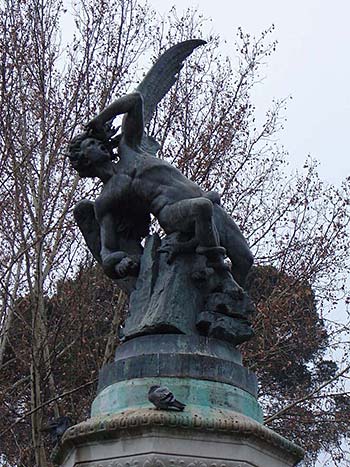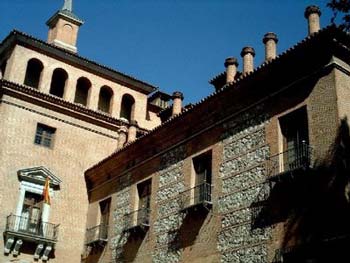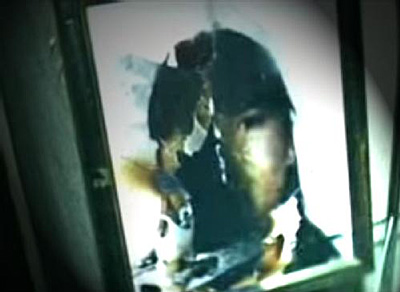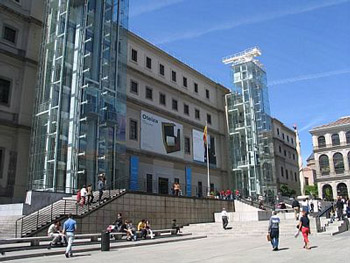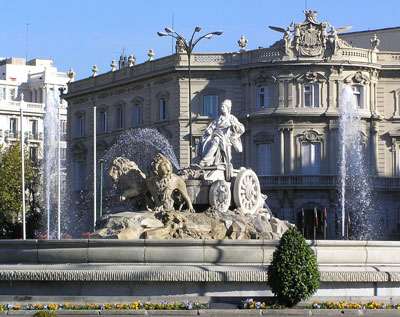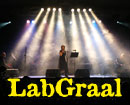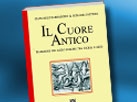| English Page |
Mysteries and ghosts of Madrid |
 |
 |
| 25 August 2011 | ||||||||||
Madrid is a loud city, where people are always in a hurry. In following the daily routine, Madrilenians hardly make eye contact in a world of growing impersonality. Only by lifting one’s gaze makes it possible to pierce into the uncanny aspect of this Town. The walls of the madrilian buildings, silent keepers of great stories, legends, ghosts, satanic deeds, blood-tinged crimes and a long list of supposedly logic defying phenomena that no one is able to explain and torment the citizens of Madrid night after night. Roughly around the 18th century, the elders told tales of witches and mysterious beings that inhabited the area that today comprises Segovia Street. Stories include an elf who grew flowers in Retiro Park each time the King crossed it and unexplainable crashing noises within the walls of several building, such as those of Toboso Street. Yet, we need not travel that far back in time to discover these phenomena. In recent years, files such as the “Vallecas Case”, which tells of the death of a small girl in what appeared to be a demonic possession caused by the reckless use of an “Ouija” board, the famous reported case of the Linares Palace (now Casa de America) where in 1990 a team of parapsychologists confirmed, through extensive analysis, otherworldly presences, or the case of the Modern Art Museum Reina Sofia (previously the General Hospital), where each night the spirits of the deceased haunted the ill residents to draw these last into their legion of wandering souls. All these cases have contributed to keeping the mysterious essence of Madrid alive. The ghosts of Madrid have their own names. Whether actual presences or attributed to legends, they live among the memories of the city’s residents who day to day walk in front their homes and peer into the windows, waiting and hoping to find them there on any given day… At the end of the street Gran Via, the goddess Cibeles stands proudly, turning her back to Linares Palace aboard her lion guided chariot. Perhaps from this spot she feels the stares of the Marquises through the high windows of the Palace, though chooses to ignore their presence.
In 1990, restoration of the Palace commenced, which had been abandoned from the mid 20th century, to transform it into Casa de America. As the restoration progressed, workers on site began experiencing strange situations in the middle of the night. Doors opened and closed, steps were heard and terrifying screams sometimes broke the absolute silence. Those events seemed to be generally stronger in the life sized Doll House that the Marquis of Linares had built at the side of the Palace for his foster daughter. The local media gave quite a buzz about such phenomena, which caught the attention of a large number of parapsychologists and investigators. There are several versions of the legend of the Linares Palace, some of which are founded on incorrect information, names, and even forged proof. The Marquises of Linares undertook construction of the Palace in 1873. Once complete, and without offspring of their own, they adopted a girl who was then named Raimundita. That’s when the Doll House was built Legend has it that the Marquises were actually stepbrother and stepsister. Upon discovery of this fact, a letter was penned to Pope Leon XIII, who emitted an edict allowing them to live under the same roof in absolute chastity. Apparently, the Marquise gave birth to a girl several months later, murdered and entombed within the walls to prevent scandal. Following that episode, they decided to live apart, in different locations of the Palace. The Marquise died in 1901, some say due to grief and sorrow, and the Marquis a few years later of a suspicious bullet wound, which some say was suicide.
There are many who claim to have experienced “something” inside the Palace. Reports were issued to Madrid’s City Hall by renowned experts in parapsychology, claiming the building matched the proper physical conditions, located in an area of subterranean currents, to allow the manifestation of ghosts and spirits. Documentation asserted that the building was filled with energy fields spawned by tragic family circumstances. During research, Linares Palace was subject to thorough analysis. Each room was photographed, measurements taken and recordings made. Room temperature dropped well under 10 degrees Celsius below zero. In the Palace’s Chapel, where strong energy signatures were detected, organ music could be heard. Pictures revealed strange energy fields that were prelude to the existence of ghosts or spirits. Furthermore, it was said that the underground area contained human remains. A team member reported seeing a little girl with curly hair and a white dress running through the Ball Room. Some claim that at night the phantoms of the Marquises can be seen wandering in sorrow within their respective Palace chambers, now remodeled into Casa de America, fulfilling their eternal condemnation of separation. The outline of the National Museum Art Centre Reina Sofia can be seen touring the Paseo del Prado from Cibeles to Carlos V square. The building that now hosts the museum was completed at the end of the 18th century. Designed by Jose Hermosilla and Francisco Sabatini, its initial purpose was to serve as the General Hospital. Thousands of people died there and then were buried within the building’s grounds. On April 25th, 1995, the newspaper “Diario 16” published an exclusive and detailed report filled with testimonials about presences and all sorts of phenomena, from doors opening and closing without human interaction, alarms going off on their own, screams coming from empty rooms, elevators actuated without passengers inside them… But those events had already been reported in the days when the building was a hospital: “The patients looked through the Hospital’s windows at sunset to catch a breath of fresh air, just to find their faces yellowish, some half past dead; faces with the pallor of disease or perhaps the stress of lying in a place where strange and unexplainable things happened each night, filled with sightings and ghostly noises, as the patients themselves complained”. *
Such events made more than one ask for relocation, or even medical leaves for the museum keepers. At night, three nuns have been seen walking the hallways, their rosaries fastened to their waists. Praying silhouettes moving through the halls or staring from the inner yard, which was impossible for anyone to access. The reports conveyed data about those events that were in many cases terrifying. The investigations conducted inside the building are far too extensive to be described herein, yet deserve detailed illustration at a later moment. However, the mystery remains unsolved and cloaked by a veil of heavy official censorship. There are many other ghosts in Madrid willing to tell their stories. The House of the Seven Chimneys or “Casa de las Siete Chimeneas”, located in Infantas St. number 31, behind Gran Via, has its peculiar tenant, the ghost of Elena, lover of the man who’d later become Felipe II, wanders on the rooftops condemning the King who murdered her and hid her body, thus preventing a proper burial. On the grounds where the renowned Quinta del Sordo one stood, where Goya painted his “Pinturas Negras” (Black paintings), those who once were models of the artist keep returning to admire “their” portraits. Many other ghosts, legends and tales of mysterious Madrid remain to be discovered, and a large number of them are linked, in a peculiar way, to the figure of the Devil. Until just a few years, Madrid could claim to be the only city in the entire world that publicly displayed a statue dedicated to the Fallen Angel. Crowning the fountain that carries its name, the sculpture of the Angel Caido, worthy in 1878 of the First Class Medal in the Fine Arts’ National Exposition, is located in the Retiro Park, in plain sight to all passer-bys. Perhaps the Devil’s presence in the city (Madrid even hosts Satan in his return to Earth in the movie “El Dia de la Bestia” or “Day of the Beast” by Alex de la Iglesia) set the stage in 1991 for the so-called “Vallecas” case: Estefania Gutierrez Lazaro, a 15 year old girl from the Vallecas neighborhood became ill after tampering with a “Ouija” board. She died shortly after, and an inconclusive autopsy report could not explain her demise.
After the child’s death, the family began experiencing strong paranormal phenomenon in their home. Estefania’s voice could be heard screaming for them, only to die down when reaching her bedroom. Events increased in frequency and impact. The child’s sisters saw a strange being in their bedroom, dolls jumped off their shelves as if someone tossed them and the screams coming from the bedroom became more and more heart wrenching. Drawers and doors opened and closed without anyone touching them. The most noticeable yet strangest event involved one of Estefania’s pictures. It fell to the floor before those gathered, without anyone having touched it, and caught fire inside its frame, regardless of impossible combustion due to the lack of oxygen inside the frame. Facing such a desperate situation, the family finally notifies to the police. Two patrol cars of the national police were dispatched to the house and the officers witnessed what was taking place there, even watching a crucifix fixed to the wall retort on its own until breaking. The police report stated that the phenomena could not be logically explained. Shortly after, the family left the home.
Madrid, however, is cove to many more mysteries and secrets that are in plain sight, such as the 75 military declassified files between 1992 and 1997 describing the main UFO sightings over Spain, as reported by pilots and citizens. concerning flying saucers and suspicious lights in squid-like shapes. These files are now on display to the public at the Air Force Headquarters Library. *Chronicle published by the newspaper Ilustración Española y Americana |

